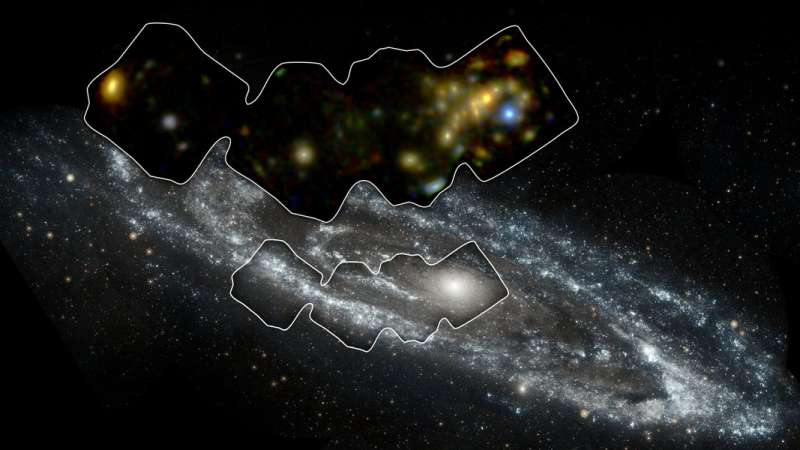Explanation: A mere 2.5 million light-years away, the Andromeda Galaxy, also known as M31, really is just next door as large galaxies go. In this (inset) scan, image data from NASA's Nuclear Spectrosopic Telescope Array has yielded the best high-energy X-ray view yet of our large neighboring spiral, revealing some 40 extreme sources of X-rays, X-ray binary star systems that contain a black hole or neutron star orbiting a more normal stellar companion. In fact, larger Andromeda and our own Milky Way are the most massive members of the local galaxy group. Andromeda is close enough that NuSTAR can examine its population of X-ray binaries in detail, comparing them to our own. The background image of Andromeda was taken by NASA's Galaxy Evolution Explorer in energetic ultraviolet light.
1999 2000 2001 2002 2003 2004 2005 2006 2007 2008 2009 2010 2011 2012 2013 2014 2015 2016 2017 2018 2019 2020 2021 2022 2023 2024 2025 |
Январь Февраль Март Апрель Май Июнь Июль Август Сентябрь Октябрь Ноябрь Декабрь |
NASA Web Site Statements, Warnings, and Disclaimers
NASA Official: Jay Norris. Specific rights apply.
A service of: LHEA at NASA / GSFC
& Michigan Tech. U.
|
Публикации с ключевыми словами:
M 31 - Andromeda galaxy - X-ray - Туманность Андромеды - рентгеновское излучение
Публикации со словами: M 31 - Andromeda galaxy - X-ray - Туманность Андромеды - рентгеновское излучение | |
См. также:
Все публикации на ту же тему >> | |
